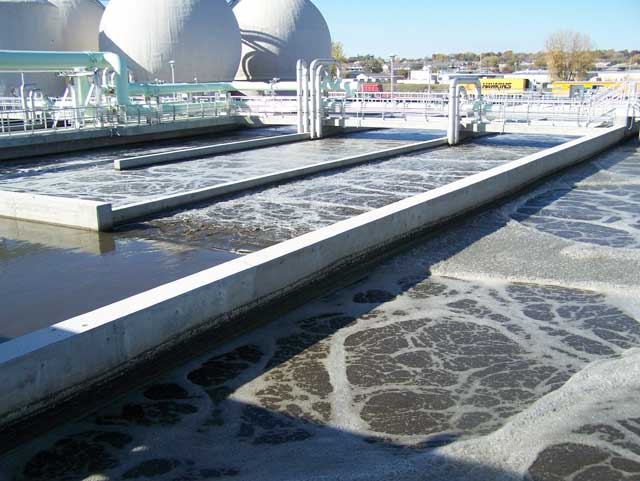Aeration Basins and Activated Sludge
Supplemental Dissolved Oxygen Using Hydrogen Peroxide for BOD and COD

| | Supplemental Dissolved OxygenHydrogen peroxide has been used to reduce Biological Oxygen Demand (BOD) and Chemical Oxygen Demand (COD) in refinery wastewaters for many years. |
This includes:
- Supply of Supplemental Dissolved Oxygen (DO) when biological treatment systems experience temporary overloads or equipment failure.
- Predigestion of wastewaters which contain moderate to high levels of compounds that are toxic, inhibitory or recalcitrant to biological treatment.
As indicated by these examples, hydrogen peroxide can be used as a stand-alone treatment or as an enhancement to existing physical or biological treatment processes, depending on the situation.
Hydrogen Peroxide is a Supplemental Oxygen Source
 The BOD/COD removal efficiency of aerobic biological treatment processes depends on a number of factors including (but not limited to): Influent BOD/COD loading, F:M ratio, temperature, nutrient levels and dissolved oxygen (DO) concentrations. Many biological treatment facilities use hydrogen peroxide to supplement dissolved oxygen levels when oxygen limited conditions in aeration basins result in poor BOD/COD removal. These conditions can be brought about by unexpected peaks in influent BOD/COD loading; seasonal variations in BOD/COD loading; and hot weather – which reduces the efficiency of oxygen transfer by mechanical aeration equipment (i.e., O2 solubility decreases as temperature increases). These conditions may or may not be accompanied by filamentous bulking.
The BOD/COD removal efficiency of aerobic biological treatment processes depends on a number of factors including (but not limited to): Influent BOD/COD loading, F:M ratio, temperature, nutrient levels and dissolved oxygen (DO) concentrations. Many biological treatment facilities use hydrogen peroxide to supplement dissolved oxygen levels when oxygen limited conditions in aeration basins result in poor BOD/COD removal. These conditions can be brought about by unexpected peaks in influent BOD/COD loading; seasonal variations in BOD/COD loading; and hot weather – which reduces the efficiency of oxygen transfer by mechanical aeration equipment (i.e., O2 solubility decreases as temperature increases). These conditions may or may not be accompanied by filamentous bulking.
When hydrogen peroxide is used to supplement DO, it is metered directly into the aeration basin of a biological treatment system to provide an immediate source of dissolved oxygen. The conversion of hydrogen peroxide to DO in an activated sludge mixed liquor proceeds according to the following reaction:
| Catalase Enzyme: 2 H2O2 → O2 + 2 H2O |
Catalase enzyme is a natural decomposition catalyst for hydrogen peroxide, and is found in all activated sludge mixed liquors, being produced by most aerobic organisms. Because this enzymatic decomposition of hydrogen peroxide is very rapid, the oxygen supplied by hydrogen peroxide is immediately available for uptake by the aerobic organisms.
The above reaction shows that two parts of hydrogen peroxide will yield one part of dissolved oxygen. Therefore, the amount of hydrogen peroxide required to oxygenate the wastewater is surprisingly small. In actual practice, the requirement may be higher due to side reactions with oxidizable compounds.
Back to top
Get More Information
Contact USP Technologies for more information on our products and services: